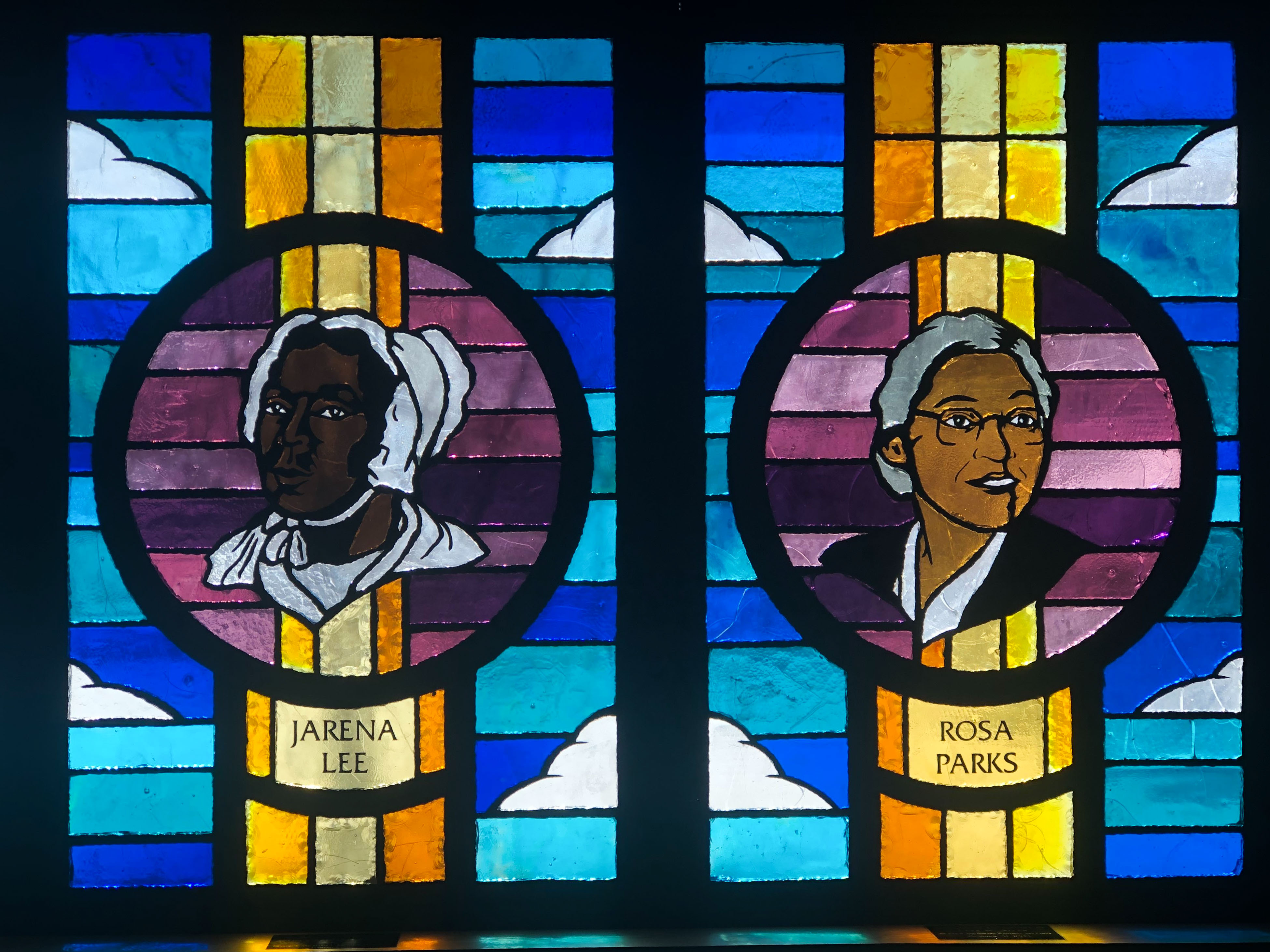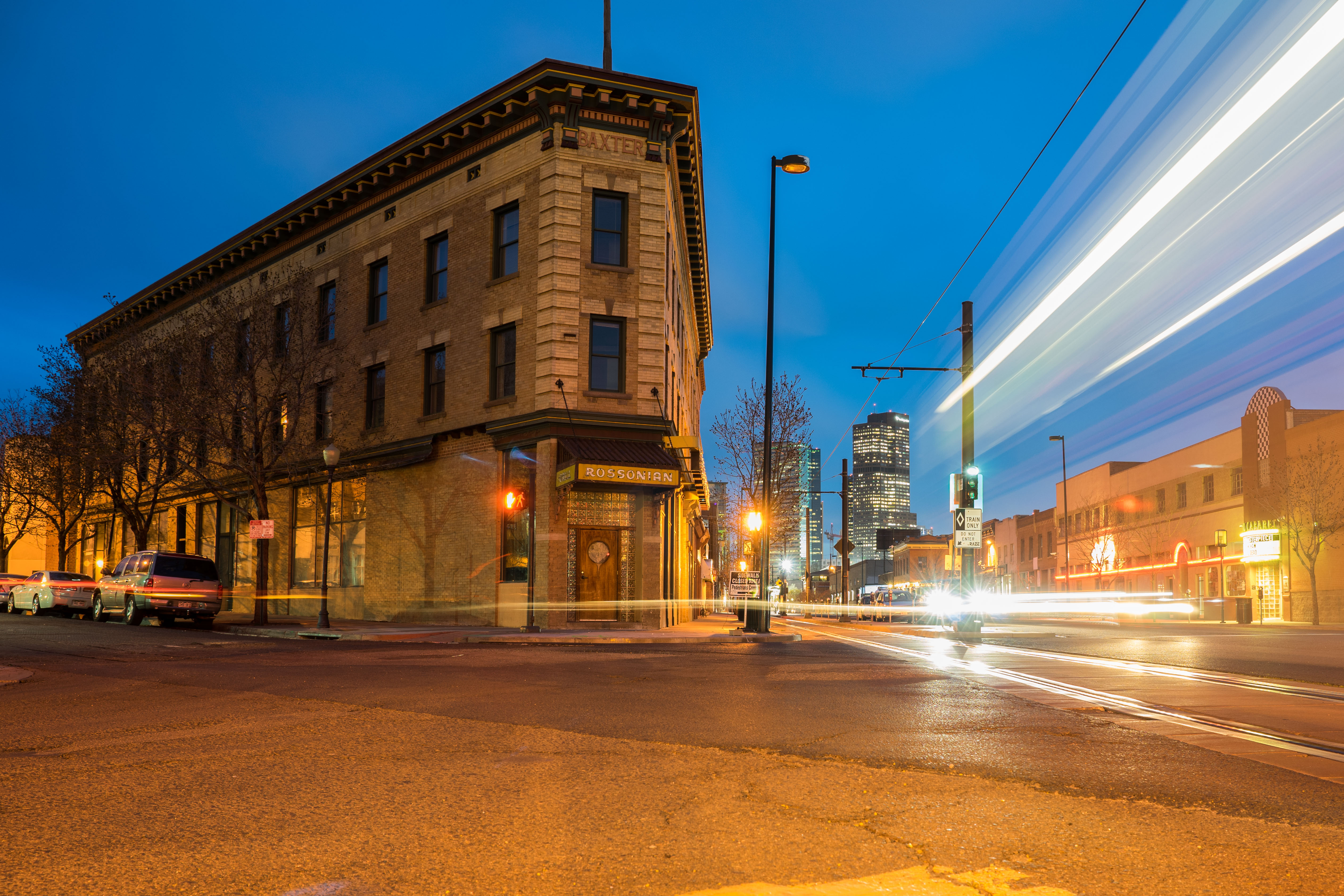If you know Denver’s different neighborhoods, then you know Five Points is one of the oldest and more diverse areas of the city. The Five Points neighborhood was founded in 1880. It was near one of the city’s first cable street-cars and was home to affluent families. By the early 1900s, a housing and job influx encouraged many black families to move into the area. Now, Five Points is distinguished as a historic neighborhood and is still representative of some integral elements of Denver’s African American culture.
The Black American West Museum is an important cornerstone of Five Points, and a powerful representation of the growth of black culture in Colorado. History Colorado partnered with the museum for Black History Month to host a bus tour around the Five Points neighborhood and a look inside the people and places that have supported the culture and community over the years.
Our morning began in the Black American West Museum that was once home to Dr. Justina Ford. She was Colorado’s first licensed black female physician. Dr. Ford was barred from the Colorado Medical Society, which disallowed her to work in Colorado hospitals. Yet she excelled in a world designed to repress her freedom, started a practice out of her own house, and delivered over 7,000 babies of at least 37 different geographical backgrounds. She challenged racism and opened her home to a community of all different heritages, skin colors, and/or religions. Her legacy illustrates the diversity and support that Five Points exemplifies. It was the perfect way to set the tone of our bus tour, and to prepare all of the guests for the many influential people we would come to learn about as the day progressed.

Terri Gentry and Daphne Rice-Allen are volunteers at the museum who led the “Beyond Five Points” tour. Both women have rich family histories within the community, and shared their incredible insight with us. We visited many parks dedicated to influential black members of the community, as well as the establishments that have had an important role in the neighborhood’s development. From a park dedicated to civil rights leader, Jesse Langston Boyd, a minister at Shorter AME church, to one for Daniel Hale Williams, one of the first physicians to perform open heart surgery, the tour was filled with monumental stories of perseverance, bravery, and the complex history of Colorado that honors all that black Americans endured and accomplished throughout our western history.
We discussed people who were instrumental in Five Points’ music development as well including George Morrison, who founded one of Denver’s first jazz orchestras, and Hattie McDaniel, an East High School graduate, and one of the foremost jazz singers of her time and the first African American to win an Academy Award. And we celebrated members of the African Methodist Episcopal Church (AME), who fought for civil rights such as, Jarena Lee, the church’s first female preacher, Rosa Parks, and Bishop Vashti Murphy McKenzie (who will be retiring in 2020). As we stood in Shorter AME church, and listened to the stories of this 150-year-old congregation, we stared at the stained glass window that honors some of the most influential African American women that have made the world a better place. In a racialized world, surrounded by white chapels, this church has stood the test of time and been home to some of the most inspirational people in our history.

More than anything, this tour was a chance to look at Denver through a new perspective. Civil rights were fought for across the nation, and Colorado was not exempt from taking part in the painful oppression of black citizens. Gentry told the tour, “I do not call my ancestors slaves. I call them formerly enslaved, because that is not all that they were, that does not define them.” Though Colorado was not a slave state, there was a large effort to make it one in 1854 during the Kansas-Nebraska Act. It is something we don’t talk about enough, but we were not shielded from America’s history of oppression and exploitation.
Gentry and Rice-Allen shared their experiences as young black women in Denver during the forced school-busing era. They talked about the violence and hatred that flooded classrooms and hallways, and what it is like to look back on that time now and still feel the horror.
Today, gentrification bleeds into many historic neighborhoods through Denver, and unfortunately, as Gentry and Rice-Allen explained, developers don’t always recognize what they are jeopardizing when they take over the economic and social functions of a district.
Gentry explained, “It is important to understand that with history, there are so many perspectives.” African American history in Five Points is a part of a larger scope, and this diverse neighborhood cannot be fully appreciated by interpreting each community’s perspective as an isolated history. “In this neighborhood, we hope people want to discover everyone,” Terri added. Both women explained that if developers took the time to understand the communities they were coming into, then perhaps less people would be displaced in the process. But no matter what this neighborhood goes through, it remains a keynote map of time and will canonize Colorado’s African American culture and heritage for all who take the time to learn.
Beyond Black History month, the Black American West museum holds guided museum and walking tours throughout the year. It is a vital piece of Five Points’ history, and a way to understand the neighborhoods culture from diverse perspectives.
You can visit them Fridays and Saturdays between 10 a.m. and 2 p.m. at 3091 California St., Denver





